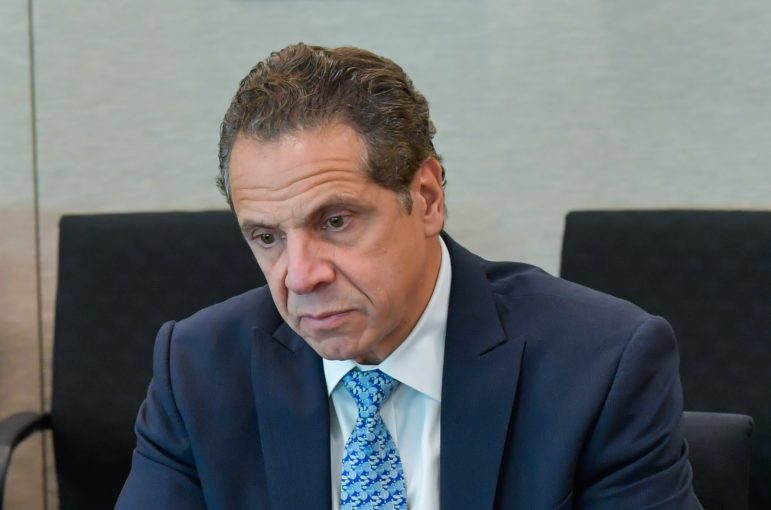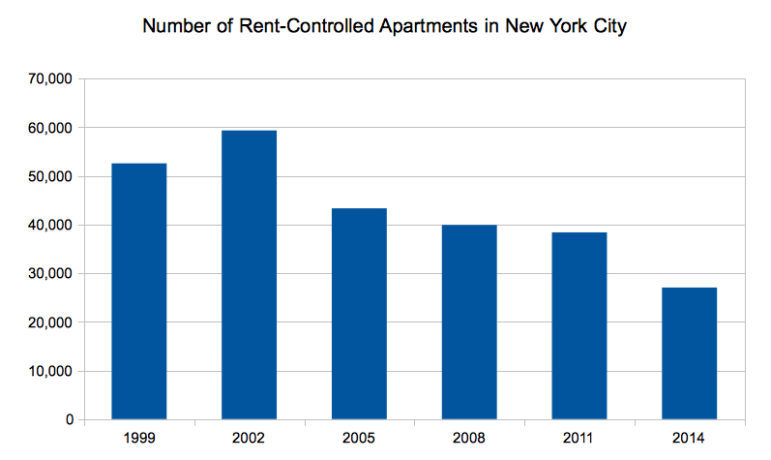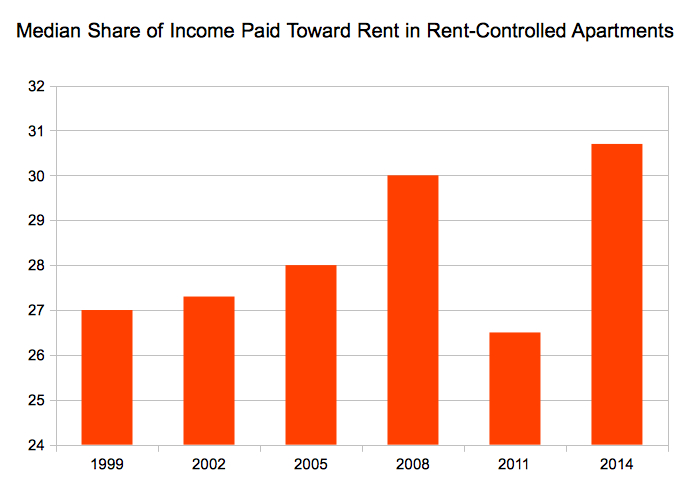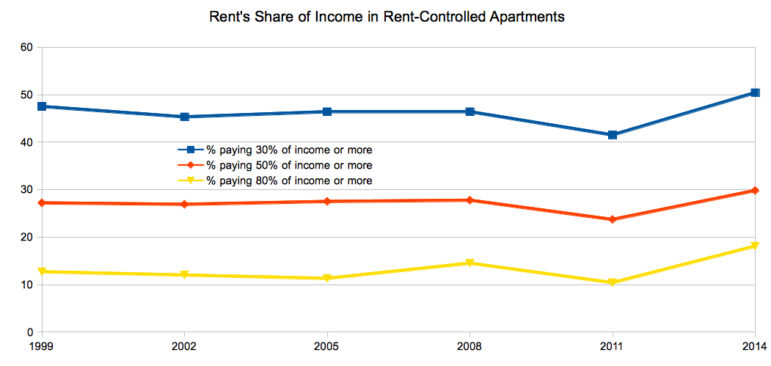
Office of the Governor
Housing advocates are pressing Gov. Cuomo to intervene in this year's process and freeze rents.
New Yorkers who live in the city’s one million rent-stabilized apartments have enjoyed a slowdown in rent hikes under Mayor de Blasio.
While the Rent Guidelines Board—which the mayor controls—permitted a cumulative 12 percent rise in one-year rents during Michael Bloomberg’s final term, there’s been only a combined 2.25 percent jump in stabilized rents under the current mayor. Some apartments might have seen bigger hikes because the landlord claimed to have made capital improvements, or the apartment was vacated and reoccupied, or the property owner withdrew or reduced a “preferential rent” discount. But in general, the climb in housing costs has been slowed for the city’s stabilized set.
However, people living in apartments governed by the smaller, older system called “rent control” have not been as fortunate. Rent changes for those 27,000 or so apartments are governed not by the annual decisions of the Rent Guidelines Board but by what’s called the Maximum Base Rent system. Every two years, the state Division of Housing and Community Renewal (DHCR) adjusts the Maximum Base Rent for rent-controlled apartments using a formula based on costs to landlords like taxes and water fees. Landlords who file applications asserting they have corrected any outstanding, serious housing-code violations are then permitted to hike a tenant’s rent as much as 7.5 percent a year until the Maximum Base Rent (or MBR) is reached.
In 2015, the MBR was jacked up 9.6 percent. This year the agency has projected a 7.2 percent increase.
Housing advocates are pressing Gov. Cuomo to intervene in this year’s process and freeze rents, something the governor says he does not have the power to do. The advocates’ argument is that residents of rent-controlled housing are largely senior citizens on fixed incomes—after all, to live under rent control you essentially have to have occupied the apartment since the 1970s.
The shrinking size of the rent-control system and the growing burden of rents within it are key parts of this story. Here is how the recent numbers look, according to the triennial federal Housing and Vacancy Survey for New York City:











8 thoughts on “Rising Rent Burdens and Falling Apartment Numbers Mark the City’s Rent-Control System”
We should simply end the rent control program. It is complicated, administratively complex, expensive and doesn’t fulfill a social good. The major determinant of rents is the landlord’s ability to deal with the bureaucracy — rents are not related to tenant incomes, apartment conditions, local markets, apartment sizes, etc.
Nearly 50 years after it was initially phased out, the only people living in rent controlled apartments are:
a) People who have not moved in 50 years, and are now quite old. These people were usually never wealthy to begin with, and, in old age, have less money. Most are covered by scrie
b) Children of a) — some have done well, some haven’t
c) Occasionally, grandchildren of a) — often these people inherited highly desirable apartments at laughably low rents, and are capable of paying substantially more . There’s no particular societal reason to subsidize them.
overall, we’d be better off by converting RC apartments to RS/FM depending on size/condition/tenant income, and eliminating the RC program entirely.
Pingback: Rising Rent Burdens and Falling Apartment Numbers Mark the City’s Rent-Control System
This is completely insane. They are asking for a freeze in rent controlled rents. Meanwhile, for example in the Bronx, the going price for a fair market rent of a 2 bedroom apt is anywhere from 1400 to 1700. Why is it fair for a person to continue to pay 70 to 80% less or 200 to 400 dollars for that same apt. Meanwhile, we had a 2 year rent freeze on rent stabilized apartments which kept the income at par for 2 years in a row. But in return, the city raises our taxes, water and sewer charges, insurance fees to the extreme limit and building repairs with nuisance tenants only continue
to rise. What should the NYC landlords do?
Just FYI, the median contract rent in a New York City rent-controlled apartment in New York City was $900 in 2014. Less than a fifth of rent-controlled apartments were rented for $400 or less. So, you’re right, those bottom-basement rents do occur — but I don’t know that they are representative of the class.
What is the median R/C apartment like?
$900 isn’t exactly a ton of money, and almost all rent-burdened R/C apartment dwellers are eligible for SCRIE/DRIE, so many of them won’t pay the increases anyway. This doesn’t seem like a compelling public priority.
“What should the NYC landlords do?”
well, if they want to complain, they can take along walk off a short pier. anyone who is a landlord in this city owns property in this city, and property in this city has appreciated so fast that landlords are sitting on huge piles of cash. if being a landlord is sooooooooo burdensome for them, they can sell their property, downsize, and live off the profits. i don’t feel even the tiniest bit of sympathy for them.
A very well-written article!
I am in a rent controlled apartment.?” My rent is $1.678, but I pay $1,222.48 because of SCRIE. I am a senior citizen, my income is $1,330.00 monthly. I moved into the building in 1975 with a lease for three years. After the lease expired, my landlord says my apartment is rent controlled. I have no rent history, apartment has not been registered since 1980 with a $280.00 monthly rent. Can u help me, or direct me where to go for help?